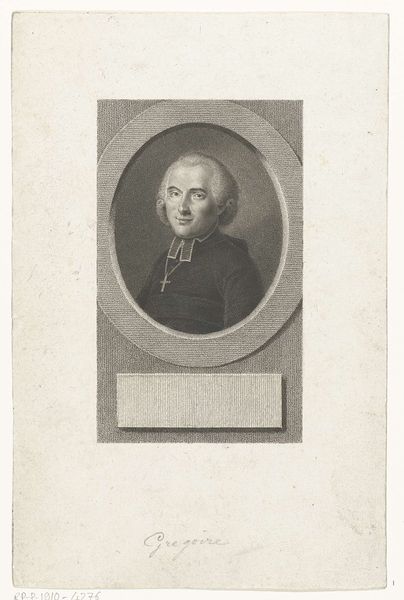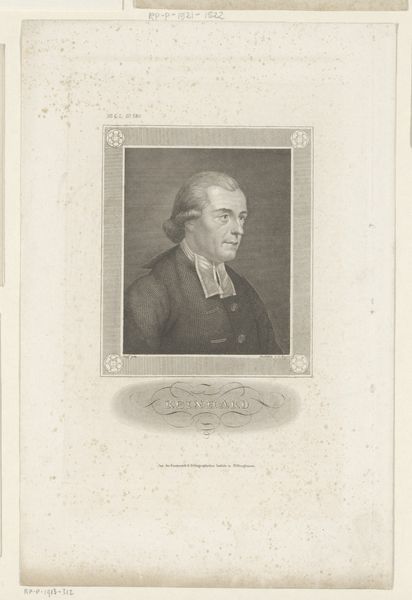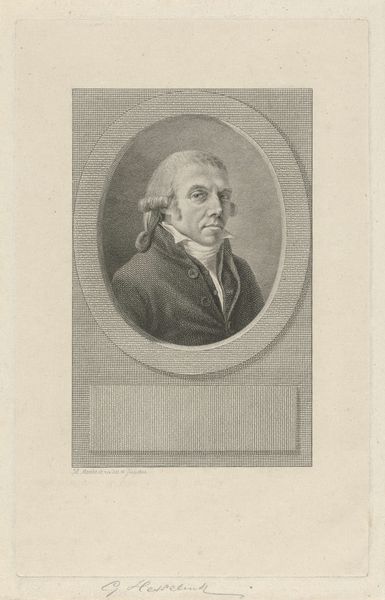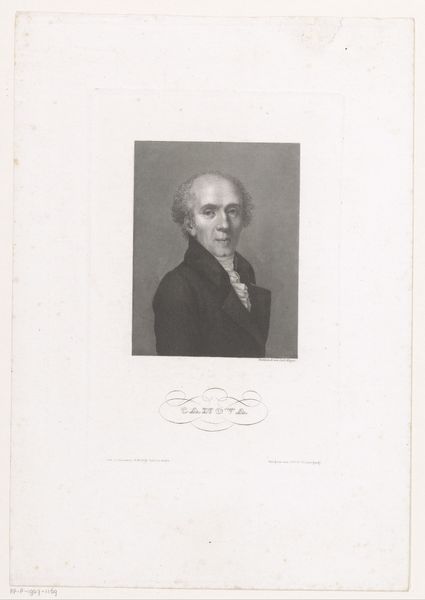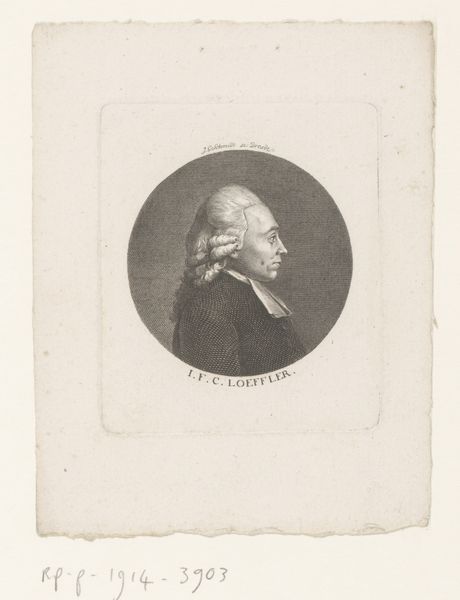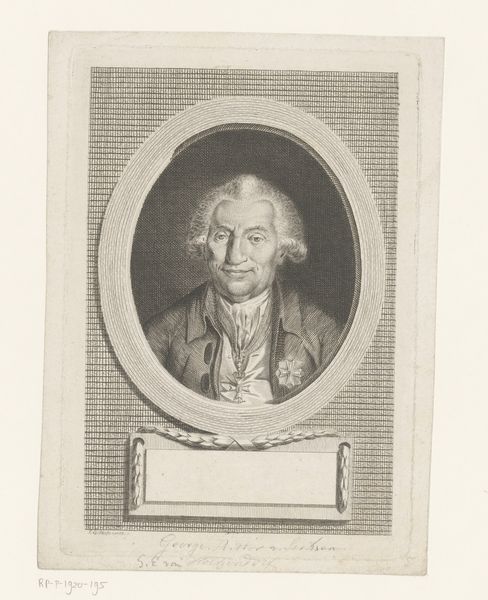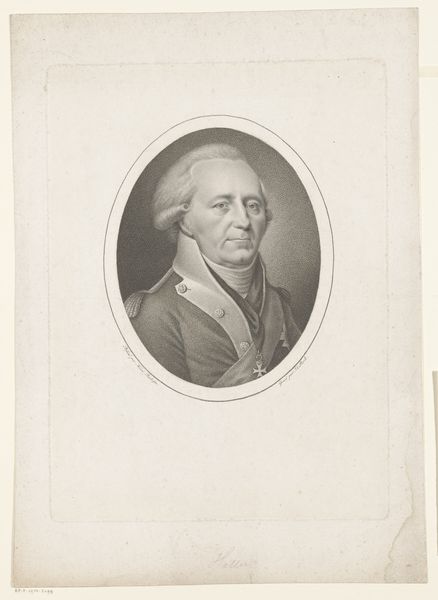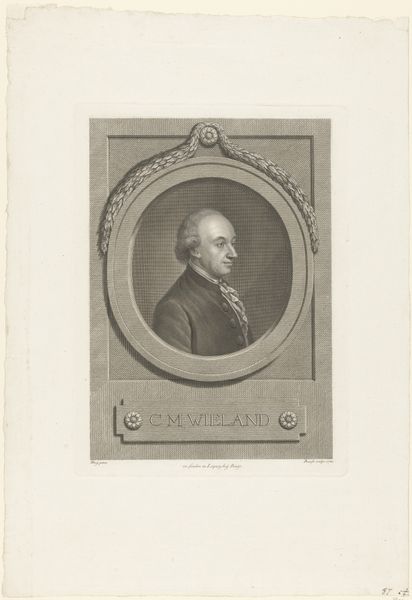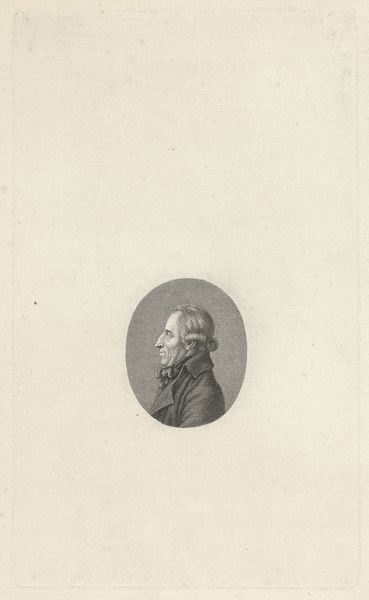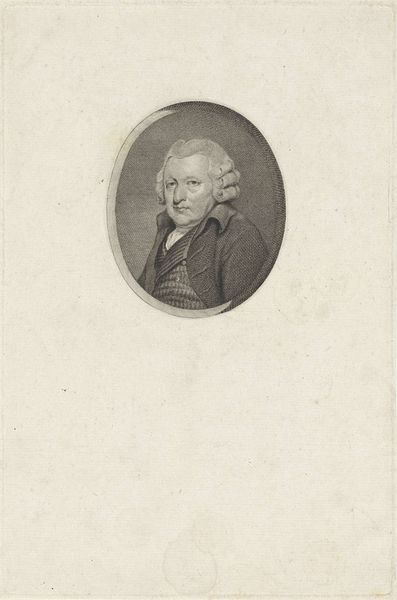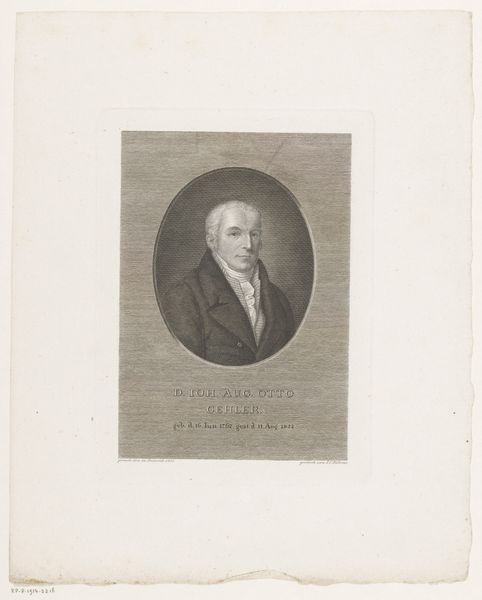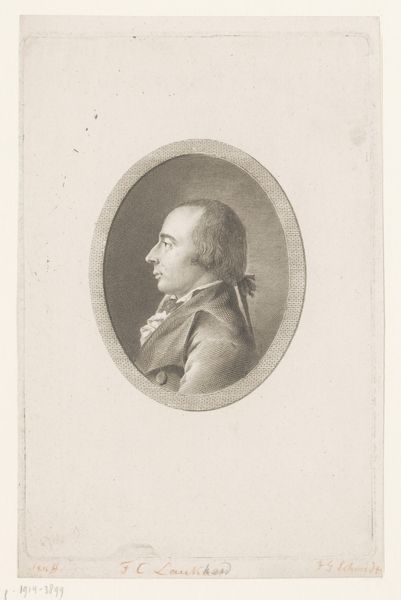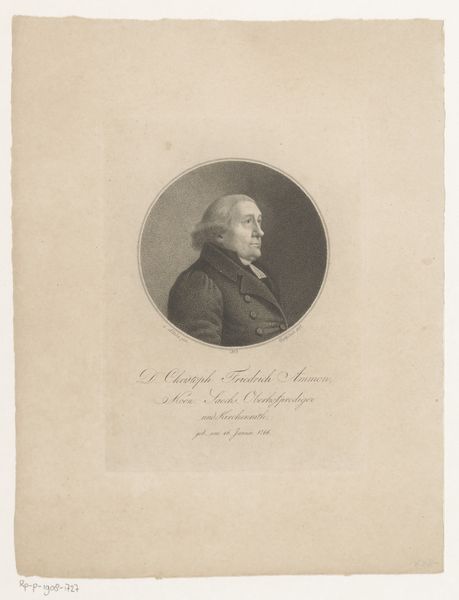
engraving
#
portrait
#
neoclacissism
#
aged paper
#
light pencil work
#
dutch-golden-age
#
light coloured
#
old engraving style
#
history-painting
#
engraving
Dimensions: height 282 mm, width 210 mm
Copyright: Rijks Museum: Open Domain
Curator: Immediately, the severity of the subject’s gaze is quite arresting, isn't it? A stern countenance, framed within that neat oval. Editor: Yes, almost a starkness. But look closely at the medium—the engraving itself. The material tells a tale of reproduction, accessibility. This isn’t some unique, commissioned piece, but something intended for wider circulation. Curator: Precisely. It is a work by Reinier Vinkeles, made in 1785: a print titled "Portret van Joannes Claessen." Vinkeles was, of course, a renowned engraver. The precision, the sheer technical mastery evident in the linework… It speaks to a refined artistic sensibility. The oval frame containing the subject enhances the overall composition by containing its subject. Editor: While the technical skill is undeniable, let’s not overlook the material context. Engravings served a social function. Who was Claessen? Why was his image deemed worthy, or necessary, of replication and dissemination? It reminds us that art-making always implicates power, labour, distribution, and networks. Curator: That is undoubtedly a consideration. The subject's clothing, a simple black coat, with a plain white neckpiece; is typical for clerics in that period and underlines his authority, his role within the community. These choices carry semiotic weight. Editor: And consider the engraver's role in this social matrix. What sort of guild structures was he part of? Did this engraving serve any civic goal? Who profited from it? And what impact did it leave on those who made the images? What's absent from the composition is as vital as what's present: those traces of labour, distribution, reception. Curator: Yes, and what do you make of the stark, white rectangle underneath? Is that the artist signaling some historical anecdote to the individual? Or something altogether removed from a history that might have existed for the engraving at one point? What message does it send? Editor: All important questions when thinking about the intersection of image, material, and culture. Examining the portrait gives an opening to deeper thinking. Curator: Indeed. A worthy endeavour. Editor: Worth the engagement!
Comments
No comments
Be the first to comment and join the conversation on the ultimate creative platform.
